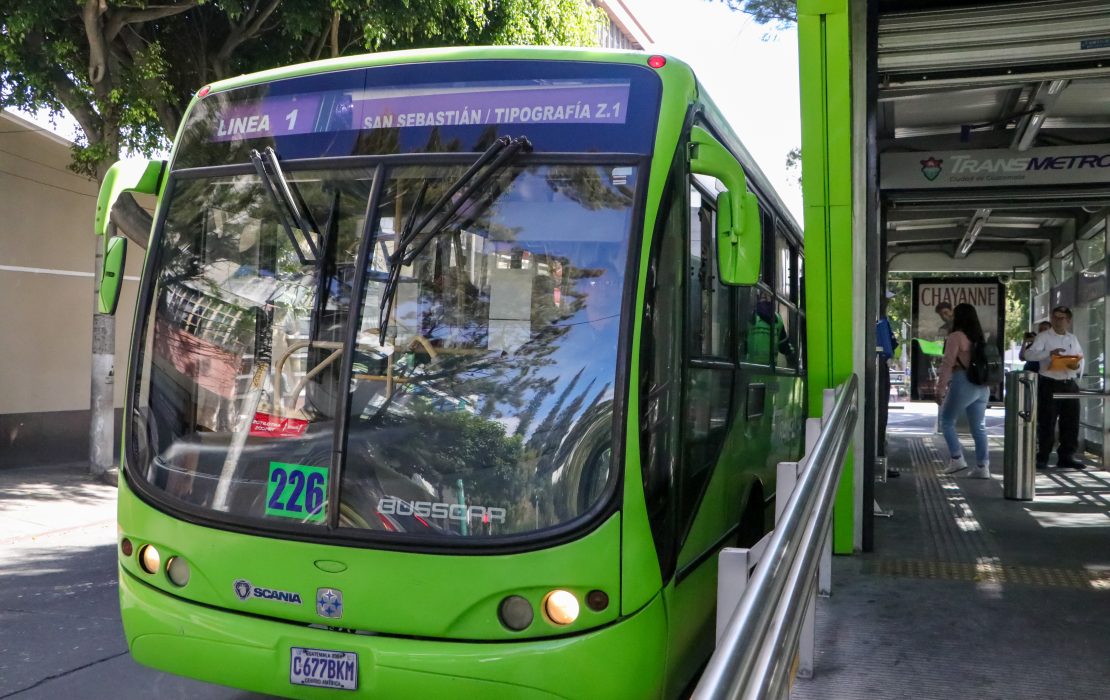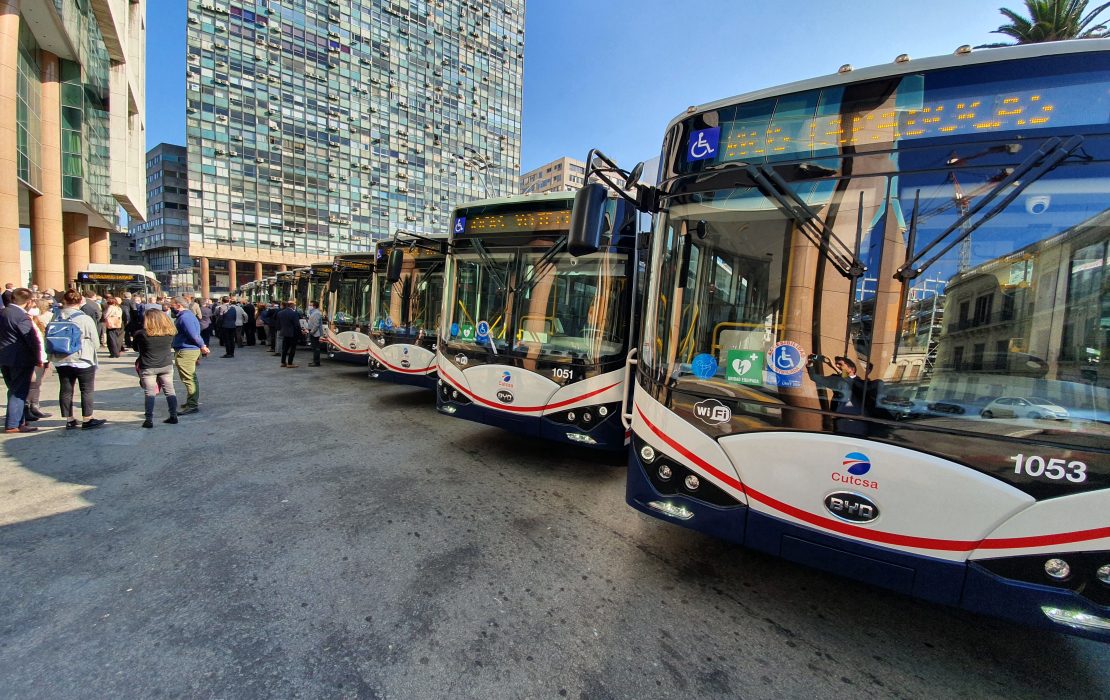
Photo: UNDP El Salvador
In Latin America and the Caribbean, the transport sector is one of the biggest sources of greenhouse gas emissions. Even though the region has one of the cleanest energy grids in the world, with 45 percent of energy production derived from hydropower, the transport sector remains largely powered by fossil fuels and accounts for an average of 39 percent of emissions from the energy sector. With the region becoming increasingly urbanized, transitioning to low-emission transport systems is essential to achieving the reductions in emissions needed to tackle climate change in line with commitments made under the Paris Agreement.
In the region, the adoption of electric vehicles is generally perceived as a key solution for transport sustainability. However, mitigating emissions in the transport sector can be achieved through a variety of solutions, some with far more potential than electrification. The electrification of the transport sector must carefully consider the energy matrix and its resilience in each country. How energy is produced in the present and how it will be supplied in the long term, including when stressed with additional demands or potential external disruptions, is key. For example, in Ecuador, a two-year severe drought threatened the country’s confidence in hydropower, which currently accounts for about 79 percent of its energy generation, therefore raising questions about the viability of transport electrification. Furthermore, while in some countries in the region, like Costa Rica, Paraguay and Uruguay, almost all energy comes from renewable sources, others – particularly in the Caribbean – depend almost entirely on fossil fuels to cover their energy needs, with their energy resilience being vulnerable to hazardous climatic conditions. Beyond considering the energy matrix, national and local administrations also need to carefully evaluate their population’s transport needs and demands, as well as their resources and capacities.
Fully comprehending how all these factors intertwine in a local context requires the joint intervention of the public and private sectors, civil society, professional associations and academia in a detailed exercise of evaluating all alternatives and reaching long-term agreements.
As part of UNDP’s support to countries to submit more ambitious national climate pledges and achieve their climate goals, we are trying to understand the main limitations to accelerating progress on reducing emissions in the transport sector and work with countries to address them. Our recent comprehensive study analyzes how all 20 countries in Latin America and the Caribbean have included specific measures on transportation in their Nationally Determined Contributions (NDCs).

Photo: UNDP Guatemala
Photo: UNDP Cuba
In many countries, freight transport by road, which accounts for 70 percent of total freight transport in the region, is the biggest source of emissions, partly due to an old and inefficient fleet. For example, in Colombia, heavy trucks, buses and light trucks account for 39 percent of the transport sector’s emissions. In Chile and Uruguay, the share is even higher, at around 60 percent. Despite offering opportunities for significant emission reductions, our analysis reveals that only 10 of the 20 countries have included targets for freight transport in their NDCs. Furthermore, only five countries contemplate intermodal transportation, which combine operations by road, rail and inland waterway, in their climate plans. This is a neglected element that can improve efficiency and reduce emissions
Public transport is the most common activity being implemented in NDCs in the region. However, in the last decade, poor quality and coverage of public transport (crowded vehicles, low frequency, insecurity) have pushed citizens to shift towards an increased use of private transport. In 18 of the 20 countries analyzed, specific established lines of action are related to modernizing public transportation and transitioning to low-emission fleets, most of them electric. But it is crucial that beyond electrifying public transport, countries also adopt comprehensive measures to improve the service, expand routes, promote intermodality and offer affordable fares to make it an attractive alternative to private or individual transport.
That bring us to the fact that private transport is a significant source of emissions in the region. In Chile, Colombia and Uruguay, cars contribute an average of 26 percent of transport sector emissions. In Costa Rica, private cars generate more pollution than any other type of vehicle, accounting for 47 percent of total emissions. To tackle this problem, countries in the region just prioritize electromobility in their climate plans. However, achieving electromobility at scale in the region is complex. Countries need to consider the emissions produced by electricity production, the complexity of developing charging networks and infrastructure at the required scale, and what will be required for recycling e-waste. In addition, greater use of electric vehicles still poses problems with congestion, travel times and the equitable distribution of urban space. But only five of the 20 countries aim to reduce the use of private transport through strategies such as traffic and parking management and policies that prioritize sustainable transport or promote remote working.
Photo: UNDP Cuba

Photo: UNDP Uruguay
As these insights reveal, there are both challenges and opportunities to consider when planning out the future of low-emission transport in Latin America and the Caribbean. To advance efforts in the sector, our analysis also puts forward a series of recommendations that governments can use in designing their updated NDCs:
- Understand social needs. To reduce emissions in transport, it is essential to first understand what the social demands are. The introduction of low-emission technologies will only be successful if adopted at a large scale, and this will depend on whether they respond to social needs and local contexts.
- Prioritize urban planning. Countries should consider moving away from designing cities around massive transportation infrastructure. They need to make more commitments to reduce citizens’ need to travel and establish attractive options to encourage them to voluntarily change their transport mode. Measures must focus on shortening travel distances, creating cities with multiple economic and transport hubs, and developing land-use plans adapted to climate change mitigation and adaptation. This could encourage the transition towards cities with a more sustainable urban model, friendly to non-motorized modes of transportation, that harnesses the new working-from-home modality combined with walking, cycling and efficient and low-emission public transport.
- Consider energy sources in the long term and at scale. When switching to low-emission vehicles, countries should consider how the energy these vehicles use is generated and how reliable it will be in the future, when the technology reaches full desired deployment. In the case of countries with a strong and resilient energy mix based on renewable sources, it will be more feasible, affordable and safe in the long term to promote the incorporation of a low-emission fleet based on the use of electricity. However, for countries that depend on fossil fuel-based electricity generation, or where the generation of renewable power is at risk, other approaches will be needed.
- Involve all actors in the definition of potential alternatives. It is crucial to include key stakeholders, such as transport operators, transport associations, the private sector, local authorities and energy companies, in the decision-making process. For example, by truly knowing their needs, cities can hold open contests that could help provide optimal solutions based on detailed city needs assessments and local and regional energy production capacities with carefully designed incentives. This will yield better results than passively adopting market offers taken from other contexts. Of course, women, young people and other historically marginalized groups must also be part of decision-making processes and benefit from the transition to low-emission transport systems.
- Develop a tailor-made finance strategy for low-emission transport. When budgeting the transition to low-emission transport, countries must consider the total cost of ownership, meaning the total cost of the service during its entire life cycle including investment, operational costs, subsidies and final disposure. These considerations will help establish realistic emission reductions targets, in line with each specific context.
In Latin America and the Caribbean, as well as around the world, transportation is one of the sectors where we could achieve significant and fast reductions in emissions. Not only because of its high emissions levels and the potential impact of interventions, but also because it offers some of the most social solutions to reducing emissions with significative co-benefits in health and life quality. These recommendations can serve as a starting point to help governments incorporate key measures related to the transport sector into their revised NDCs and ensure that they take efficient collective climate action to meet the goals of the Paris Agreement.
*
The assessment ‘Low emission transport to achieve the Paris Agreement in Latin America and the Caribbean’ was developed under UNDP’s Climate Promise by the Pledge to Impact Programme. Delivered in collaboration with a wide variety of partners, the initiative has supported over 120 countries to enhance and implement Nationally Determined Contributions (NDCs) under the Paris Agreement. Pledge to Impact is generously supported by the governments of Germany, Japan, United Kingdom, Sweden, Belgium, Spain, Iceland, the Netherlands, Portugal and other UNDP core contributors. This programme underpins UNDP’s contribution to the NDC Partnership.


